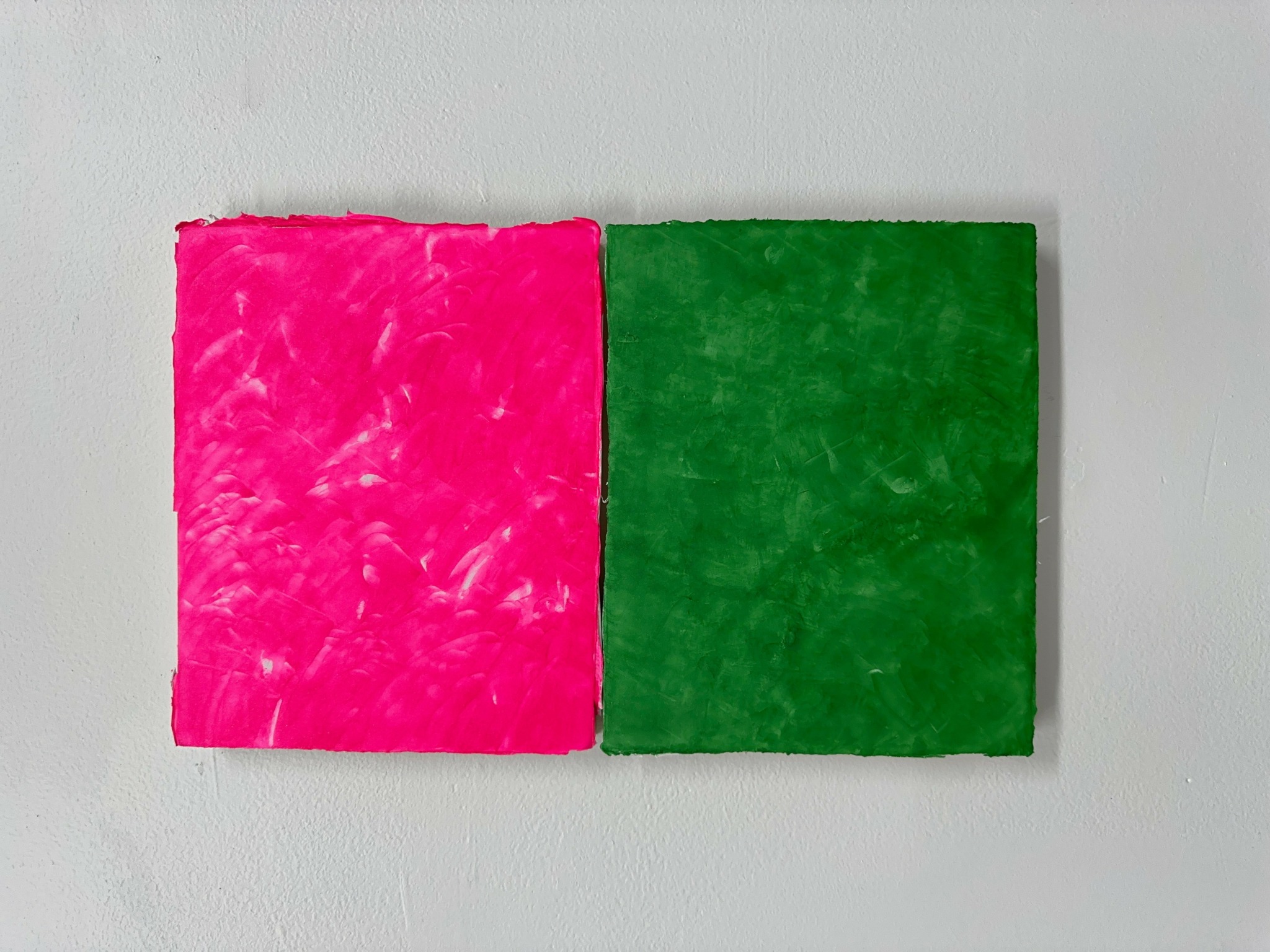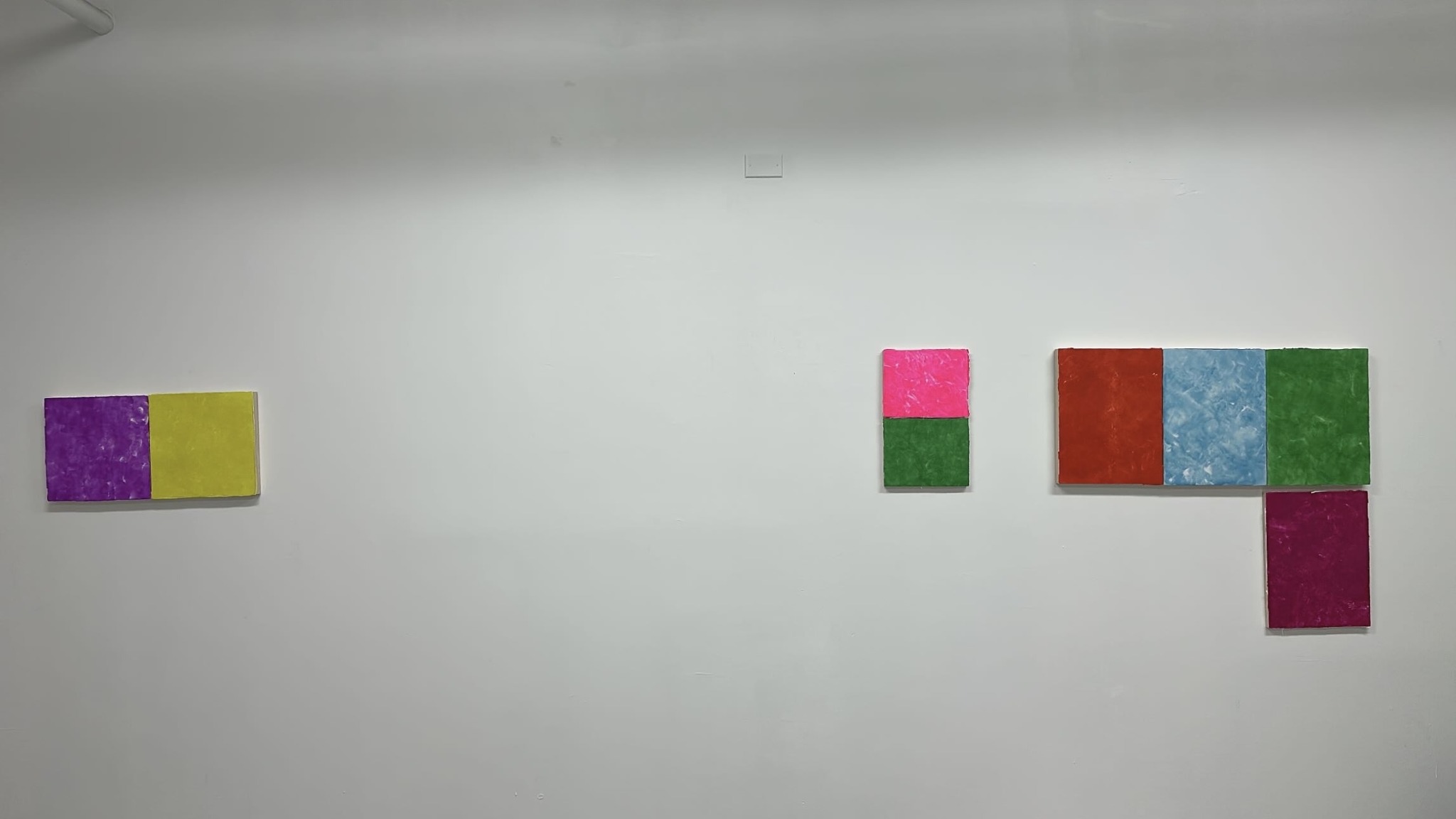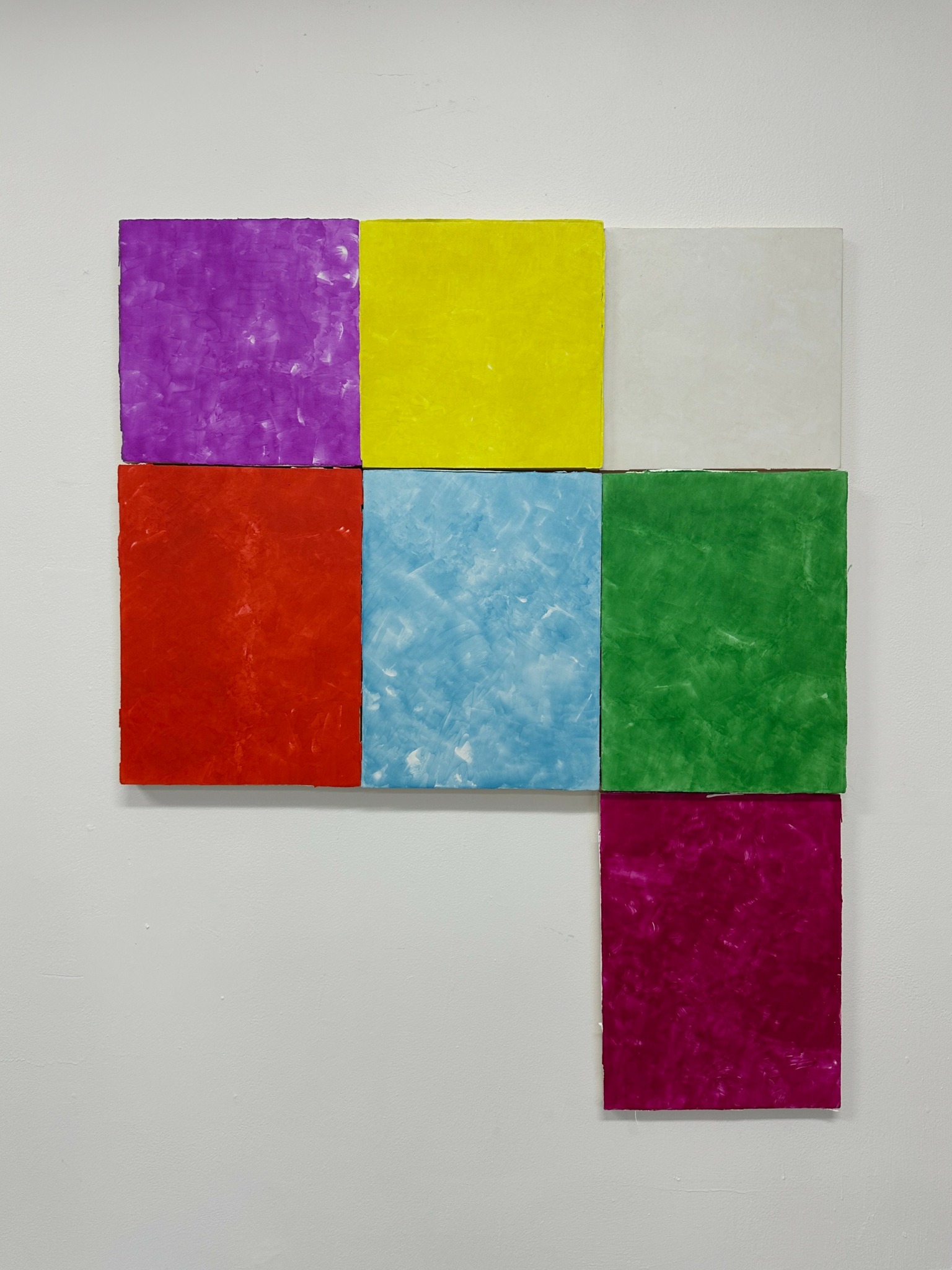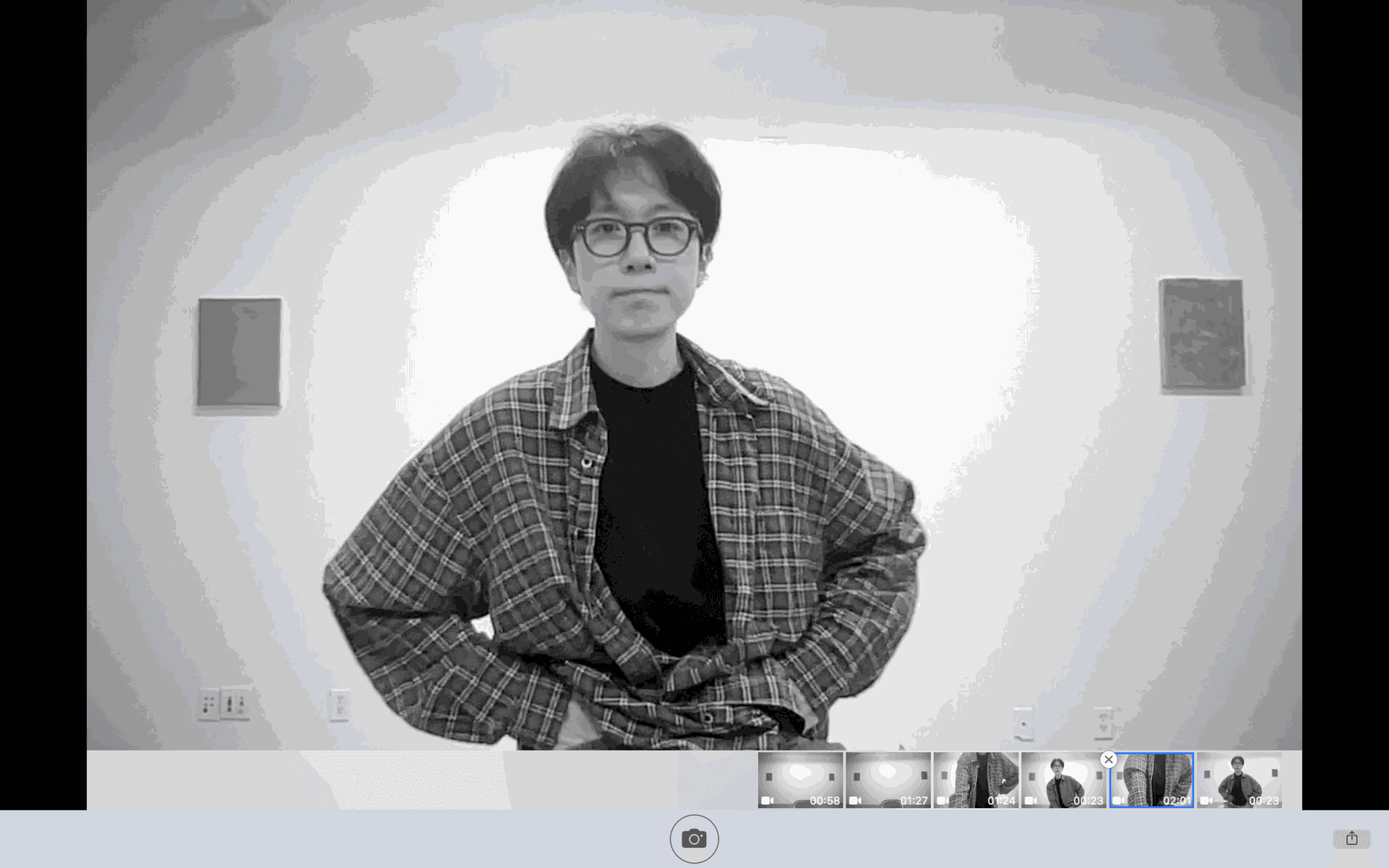We were lucky to catch up with Seungheon Lee recently and have shared our conversation below.
Seungheon, thanks for joining us, excited to have you contributing your stories and insights. We’d love to hear about a project that you’ve worked on that’s meant a lot to you.
The most meaningful project that comes to mind right now is my recent curatorial project, Out of One’s Room. The show took place at Studio in Factory, a space I started after finishing my MFA at Pratt Institute to explore how art can be sustainable and how communities can take shape around it. It’s a place where artists come together to collaborate or test experimental ideas—an open platform shaped collectively with fellow artists.
Out of One’s Room was the third exhibition at Studio in Factory and became a turning point for me and my peers. While the first two shows focused on exploring internal structures and attitudes within our community, this one looked more deliberately outward—asking what kind of role this space could play within the broader art ecosystem. Its structure was left open to wider connections, which, as someone running the space, brought both unfamiliar tension and a sense of anticipation.
It was also the first time I exhibited alongside mentors I met in New York. Conversations with young artists brought back memories of lessons I had received, and I started thinking about how those teachings could move across generations. One important moment was when Michael Brennan—one of my mentors during grad school—reached out and suggested we do something together. That became a spark, and the show ended up bridging generations in a way that felt truly meaningful.
Rather than deliver a fixed message, I wanted to create a space where different perspectives and approaches could meet. The heart of the exhibition was in how the works—each shaped by different generations and ways of working—came into contact, sometimes clashing, sometimes resonating, and forming new meanings together.
Out of One’s Room wasn’t just about generational connection—it also opened up into new encounters and future collaborations. At the closing reception, I saw people talking to each other with such openness that I began to see how this space could work like a living ecosystem. The show didn’t feel like a finished outcome, but more like an ongoing process—one where sensibilities and attitudes carry forward over time. It’s a project that continues to stay with me.

Seungheon, love having you share your insights with us. Before we ask you more questions, maybe you can take a moment to introduce yourself to our readers who might have missed our earlier conversations?
I’m a New York–based abstract painter and curator. I received my BFA from the School of Visual Arts and my MFA from Pratt Institute, and my practice moves between painting and curating, with a focus on how art can create and expand shared sensibilities between people. Much of this happens through Studio in Factory, a studio-gallery space I’ve developed as both a working environment and a platform for experimental and collaborative encounters.
My painting practice is built around single-color block works, each functioning as a self-contained unit. These pieces behave like individual fragments, but when placed in relation to one another, they’re recomposed into new spatial experiences. Just as the city of New York is layered with overlapping cultures and rhythms, my work embraces a fluid structure—one that continually breaks apart, reassembles, collides, and coexists in ever-changing configurations.
My work begins not with prolonged thinking, but with the act of moving my hands. In the past, I used to spend a long time lingering in ideas. Now, I pre-mix a fixed amount of paint and begin composing the surface using a knife and brush—layering, scraping, and building until all the paint is used. It’s a process that feels akin to an archaeological excavation: following invisible strata and uncovering what lies beneath. This method remains open to the sensations of the hand and the material’s response, allowing for chance and instinct while building a quiet, persistent density.
I work with acrylic, a material that’s widely accessible, and I simplify the structure so the process doesn’t rely on complex techniques. I believe art should not be reserved for a select few—it should be open to everyone. The repetitive act of layering and sanding gesso, though largely hidden from view, is essential to my practice. It grounds the work while reflecting on the foundations and histories of painting. By extending the gesso beyond the frame, I aim to reimagine the structure of painting itself and explore new visual languages.
In curating, I draw on painterly thinking to shape environments where different artists can come together and experiment—spaces that encourage shared sensibilities and overlapping rhythms. Studio in Factory serves as a platform for this ongoing exploration, where community is not just a backdrop but an active force in shaping new forms.
What matters most to me is not the image itself, but the attitude and method through which it’s made. If someone can encounter my work and discover their own rhythm—through their own pace and sense of perception—I think that’s one of the most profound things art can offer.

For you, what’s the most rewarding aspect of being a creative?
For me, the most rewarding moments come when I can be present as someone who truly listens to artists. Since grad school, I’ve been thinking about how the formal elements of painting connect to the content of the work, and how those connections can be shared with others. Communication, to me, isn’t just about speaking—it’s just as much about listening. As a curator, I try to listen closely to what artists are saying through their work, and to create structures that help those voices be heard rather than left unheard or internalized.
There’s something deeply fulfilling about witnessing a thought or feeling that had been stuck in the studio finally start to circulate—shared, received, and brought into motion. I’m especially drawn to group exhibitions that allow different works to collide and intersect within a single space, creating situations where artists begin to see their own work differently. After all, none of us can fully see ourselves in isolation—it’s through others, and through relationships, that we come to understand who we are.
I see group shows not just as gatherings of multiple artworks, but as spaces where each piece is transformed through its encounter with others. When an artist begins to see their own work anew—through the lens of someone else’s—I feel both the responsibility and the joy of having helped shape that moment.
And in the end, the whole process reflects back on me as well. Listening to artists and following what their work is trying to say opens me up—not just to them, but also to a deeper understanding of myself.

Let’s talk about resilience next – do you have a story you can share with us?
I don’t think resilience always has to mean overcoming a major crisis. For me, it’s often about the quiet practice of reestablishing small routines that help me move, regardless of how I’m feeling. Lately, that kind of practice has become an important turning point.
I used to hold onto thoughts about my work for a long time. I would keep refining ideas in my head, which often delayed action. That delay could be exhausting, and over time it chipped away at my confidence. After going through that cycle, I gradually shifted my focus—not toward perfect ideas, but toward simply getting myself to move.
That shift has started to extend beyond my work, into how I live. These days, I begin each morning with a simple routine: drinking warm water, then lemon water. No matter what state I’m in, that small repetition brings me back to center.
It’s the same with painting. On workdays, just going to the studio and starting to move my hands has become a kind of rhythm—a structure that carries me. Even if I’m not in the best mood, once my body starts moving, thoughts begin to flow and sensations return.
As this rhythm of daily life builds up, I’ve come to realize that resilience isn’t just about enduring. It’s about being able to move again. To me, resilience means creating a current that can carry you forward, even when things feel still.
Contact Info:
- Website: https://seungheonlee.com
- Instagram: https://www.instagram.com/leestenerprojects/
- Youtube: https://www.youtube.com/@StudioInFactory



